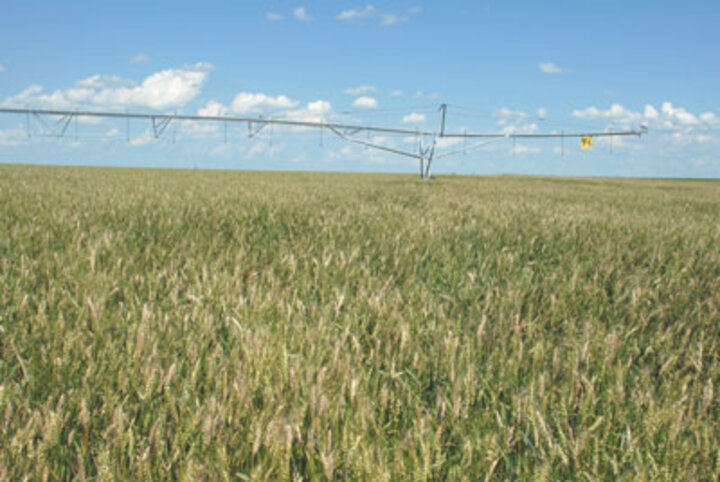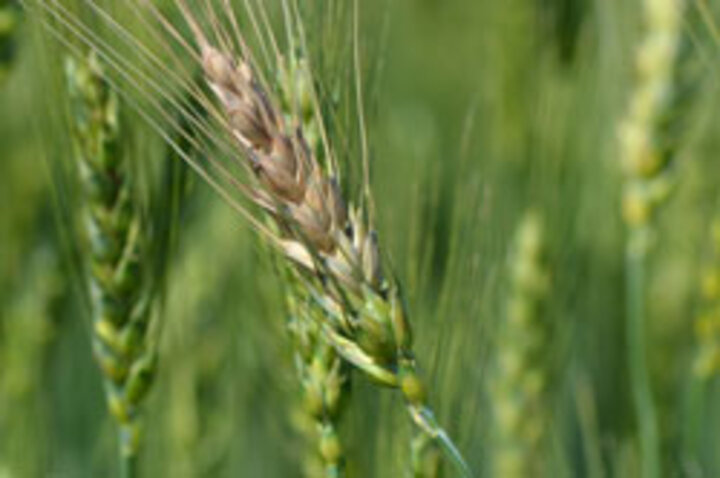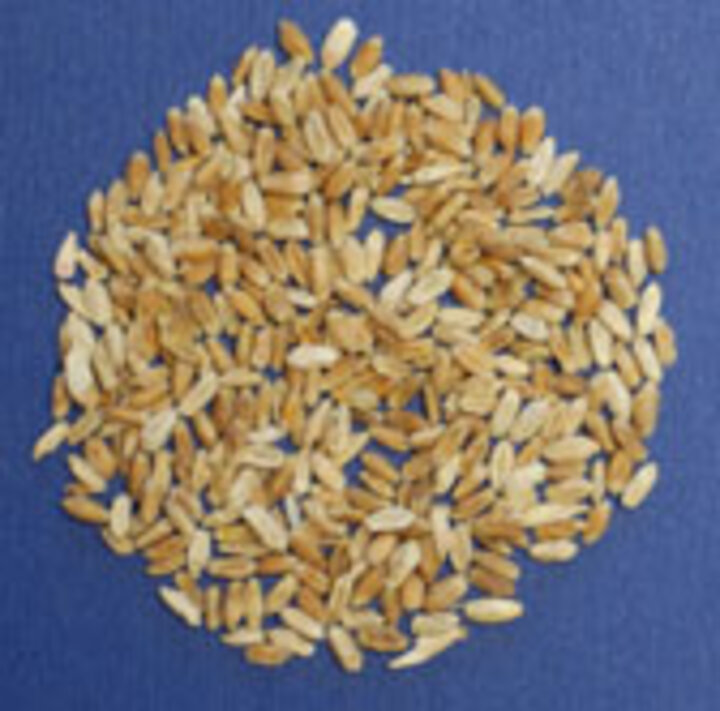Since 2007, Fusarium head blight (FHB) of wheat (Figures 1 and 2) has occurred to varying levels in Nebraska, especially in the south central and eastern parts of the state.

Figure 1. A Fusarium head blight epidemic in a wheat field in south central Nebraska in 2008.


(Left) Figure 2. Close-up of Fusarium head blight on a wheat head. Figure 3. Wheat kernels damaged by the Fusarium head blight fungus.
The most severe epidemics occurred in 2007 and 2008 and since then, moderate to severe epidemics have occurred each year in localized areas. In addition to actual yield loss and poor quality grain (Figure 3), the FHB fungus produces vomitoxin which causes grain to be discounted at the elevator.
The U.S. Wheat and Barley Scab Initiative funds research to develop effective management strategies for FHB. These strategies include fungicide application at early flowering, planting resistant cultivars, crop rotation, irrigation management, or integration of two or more of these strategies.
The U.S. Wheat and Barley Scab Initiative would like to know:
- the extent to which you as a wheat grower have implemented these management strategies,
- what challenges you face in implementing the strategies, and
- what researchers should be doing to provide you with information that will enable you to better manage FHB when it occurs.
To this end, a survey is being mailed to more than 16,000 small grain growers in 17 states including Nebraska as detailed in the news release below. I encourage you to fill out the survey if you are chosen to participate. The information you provide will help us help you to better manage FHB.
Stephen Wegulo
Extension Plant Pathologist
National US Wheat and Barley Scab Initiative Survey
In the next week or two more than 16,000 farmers in 17 states will be receiving a mailed survey on their use of best management practices to control Fusarium Head Blight (FHB), or scab. The U.S. Wheat and Barley Scab Initiative (USWBSI) contracted with USDA's National Agricultural Statistics Service (NASS) to formulate survey questions, conduct the survey, and compile the results.
"Despite the development of various powerful tools for scab management, scab outbreaks remain an annual fact of life in the U.S., and it is simply a question of which region(s) of the country will be damaged in any given year," said Christina Cowger, North Carolina-based USDA-Agricultural Research Service plant pathologist and organizer of the survey. "Adoption of the full slate of scab management techniques is fragile, uneven and partial —particularly in the soft wheat region."
The passage of a year or two without significant scab in a region tends to make the issue recede in the minds of producers and crop advisors, she points out, and the degree of adoption correspondingly drifts downward.
"We want to learn how to better help producers and their advisors reduce scab," Cowger emphasizes. "The survey will help us determine to what extent scab management practices are being [utilized] in each of the states —and what are the main barriers to implementing those practices." Some questions address the size of the farming operation, market class(es) of grains produced and the major varieties grown. Other survey questions deal with the use of forecasting websites, employment of fungicides for disease management and where producers obtain their information about scab management.
The answers will be analyzed at various relevant levels (e.g., nationally, by market class, by region, etc.) and will be shared with crop specialists in each of the surveyed states. (All answers are anonymous; there is no identifying information about any respondent.)
"The data will let us know which tools growers are using to manage scab, and what problems they encounter when using those tools," state USWBSI co-chairs David Van Sanford and Art Brandli in an introductory letter to survey recipients. "We can then better assist growers and buyers of grain in reducing the risk of economic losses to scab."
Producers who do not respond to the mailed survey by March 17 will be contacted by NASS surveyors to arrange for a telephone interview. Again, responses are completely confidential, as required by law, stress Van Sanford and Brandli. The USWBSI co-chairs strongly encourage wheat and barley producers to participate in this special survey, as producers are the ones whom it is intended to ultimately benefit.
For more information, contact:
Sue Canty, Manager
U.S. Wheat & Barley Scab Initiative
Phone: 517-355-0271, Ext. 1183
Email: scabusa@scabusa.org
News Release
U.S. Wheat and Barley Scab Initiative (USWBSI)
